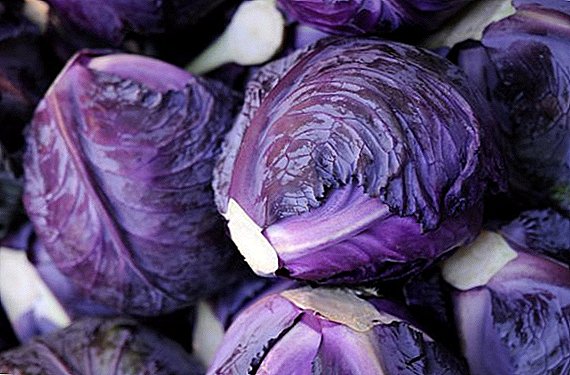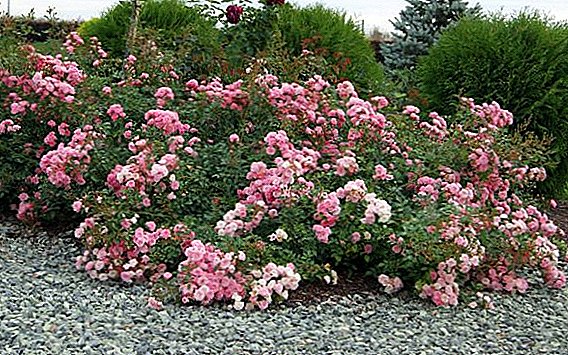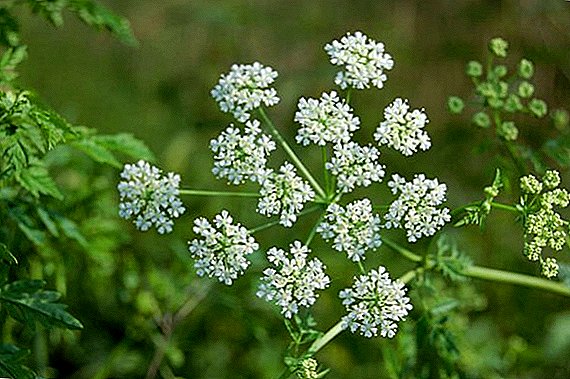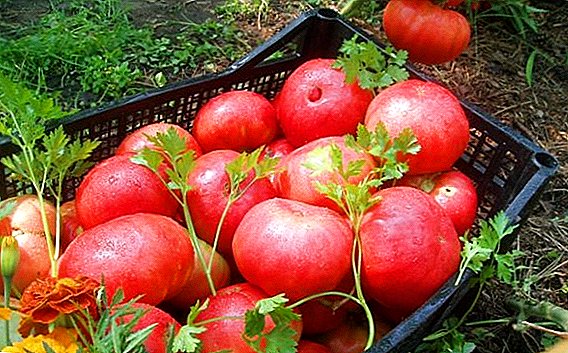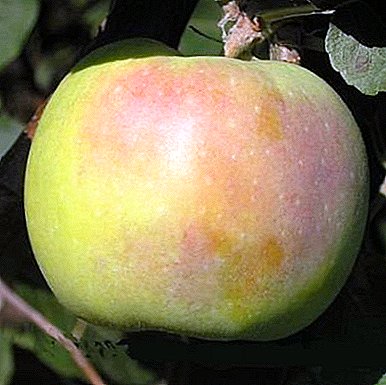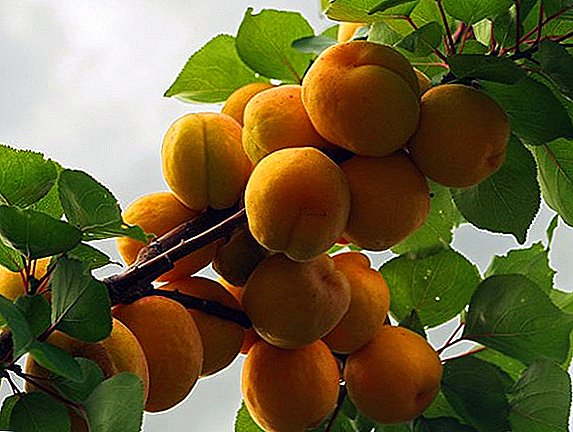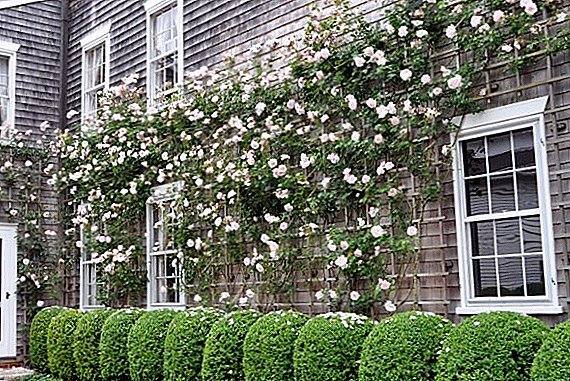 Climbing rose can rightly be called the queen of the garden, and with proper care and planting, it will become the subject of your pride and envy of your neighbors.
Climbing rose can rightly be called the queen of the garden, and with proper care and planting, it will become the subject of your pride and envy of your neighbors.
Let's talk about how to properly care for such a beautiful woman so that she will delight you for the whole season.
Short description and popular varieties
Climbing roses are ideal for pergolas, arches, fences, gazebos or wall decorations of a private house. These are tall, climbing and tenacious plants, which necessarily need support. They prefer a warm and mild climate and mandatory shelter for the winter. According to the international classification, there are 3 characteristics of roses:
- semi-woven rosesgrowing from 1.5 to 3 m in height;
- climbers - reach a height of 5 m;
- curly - reach 15 meters.
1. Klymber - reminds tall erect rose bush. The flowers have a large size and strong aroma. Excellent decoration of a flat wall, fence or grid. Common varieties:
- Elfe
- Pinkcloud
- Paul Scarlet
- Roseanna

2. Rambler distinguished by its flexibility and easy bending of shoots. Densely decorated with small, weak-leafed flowers that grow only on the shoots of the second year:
- Ghistiane de felidonde
- Bobby james
- Paul Noel
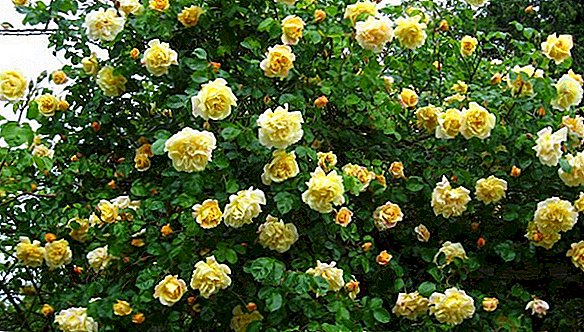
3. Klaiming - non-frost-resistant variety, which even under shelter can not overwinter. The inflorescences are small and rare, but the diameter of the flowers can be from 5 to 11 cm, also the plant has a strong aroma.
- Orange Triumph
- Cecilia Brunner
- City of York

4. Rose Climbing Cordes (Hybrid Kordesii) is unpretentious and winter-hardy, it blooms from early summer to late October. Differs in the ideal form of a flower and long blossoming. May winter without shelter:
- Dortmund
- Hamburger Phoenix
- Flamentments

5. Lambert - Abundantly flowering shrub with dark foliage, resistant to diseases:
- New Dawn Rouge
- Munich

6. Multiflora - shrub, whose height can reach 3 m, is abundantly covered with white or light pink simple flowers 1.5-2 cm in diameter with a faint aroma:
- Snow White
- Generale Tetar
- Grouss-en-Zabern
- Melita
- Moselle

7. Vihuriana - creeping and tenacious shrub, originally from Japan and China, reaches a height of 6 m, has large curved spikes:
- Excelsa
- Red poppy
- Alberic Barbier
- Glen dale
- Aelita

8. Rosa Banks - from 5 to 12 m tall, flowers are small, 1-3 cm. It differs in early flowering, from April to early July. There are such varieties of roses Banks:
- Alba Plena
- Banksia Hybrid
- Lutea Plen

Did you know? In Germany, the walls of the castle Hildesheim grows the oldest rose bush in the world, which is already about 1000 years old.
Growing conditions
The choice of location and planting climbing roses should be thought out to the smallest detail, otherwise you face frustration in its flowering and growth.
Choosing a place
This shrub prefers heated by the sun, warm places that are blown by the breeze. But at the same time, the plant does not tolerate drafts and northern winds, so planting at the corner of the house or in heavily blown places is contraindicated for it. Ideally, if the rose is in the shade for a couple of hours at lunchtime, you can avoid the appearance of burnt leaves and petals on the plant.
Before planting, consider how and where you will put the bush for the winter. Since its height can reach 2 meters and above, it is necessary to plant it so that in the future it does not interfere with other plants that do not need shelter.
When planting several climbing roses, keep a distance of 0.5-1 m between them, not less than 40 cm from the wall or support, and 0.5 m from other plants.
Important! The plant has a long root system. - up to 2 m, and does not tolerate stagnant groundwater and waterlogged soil. Therefore, you need to plant a rose on a hill or on a plot with a slight bias.
Soil requirements
The soil should be fertile and fertilized at less than 30 cm in depth. The plant prefers moisture-permeable soil in which rainwater or water from irrigation does not stay at the roots and goes deep. The most preferable is loamy soil, fertilized with compost or humus. If you have clay, then you can loosen it with sand. If the soil is very heavy, then peat is perfect for loosening.
Landing time
The best time for planting will be warm May days, when the earth has warmed up and stable warm weather has been established. Then you will know for sure that the bush will take root and be ready for the winter. You can plant it in the fall, but it is better to do it in September, so that the rose has time to take root before the onset of the first frost.
How to plant a climbing rose
Selection and preparation of seedlings
The day before the estimated planting date, the seedlings are soaked in water. It is advisable to dip not only the root system, but the whole sapling. Before planting, we cut off the long tuft-like processes of the root system, leaving 15–20 cm on each side. You can disinfect a plant by dipping it into a solution of 3% copper sulphate. Cut off the places on the shoots and grease them with garden pitch, and on the roots with ashes, in order to avoid infection with fungus or infection. These simple procedures will contribute to the rapid and proper growth and development of the rose.
Pit preparation
The day before planting, the roses dig a hole about 0.5 x 0.5 m in size, taking into account the size of the root system, because the main thing is that it feels free in the hole. Pour 1 bucket of manure or compost, thoroughly mixed with the ground, and plenty of water.
Planting flowers
- At the bottom of the fossa, a small mound is formed so that the roots of the rose can be spread around, preventing them from curling upwards.
- We put a seedling exactly in the middle, so that the grafting site or root neck is recessed to a depth of 10-12 cm.
- Next, we fill the hole with two-thirds of the earth, firmly tamping and checking for the absence of voids, and pour water.
- Only when all the water has been absorbed does we fill the bush completely with earth and roll it up to 20 cm high.
Proper care and formation of the bush
When the bush is planted correctly, we also need to properly care for it in order to get abundant flowering and a healthy plant.
Watering
Climbing rose does not like an oversupply of moisture, because watering is required every 8-12 days, depending on precipitation or hot weather. It is important not to forget to water the plants during the growing season and during the appearance of buds, this will give it strength for long-term flowering. You need to pour 1-2 buckets on a bush, depending on its size. A couple of days after watering, loosen the soil to a depth of 5 cm, as this contributes to the flow of air to the roots and the preservation of moisture. You can grush the area around the bush with bark or sawdust.
Important! Climbing rose - this is not a plant that will be glad excessive watering. From this, too much humidity increases around the bush, contributing to the appearance and development of fungal diseases.
Fertilizer
In spring, the shrub is fertilized with complex mineral fertilizer. Repeat feeding every 2-3 weeks. The second dressing can be done with a mixture of mullein and ash, diluted with water, for basal dressing, as this will contribute to a bright and abundant flowering. All dressings should be carried out during the growing season and before flowering.
From mid-summer, roses cease to be fertilized with nitrogen supplements and transferred to potash-phosphate. This is necessary for the gradual preparation of the plant to the state of rest and wintering.
Non-traditional methods of fertilizing with yeast, nettle, and liquid ammonia are increasingly used in households.
Pruning
Pruning roses is one of the most important and responsible procedures for its care, as the quality of flowering and the formation of new strong shoots directly depend on it.
Every spring, regardless of the type of roses, sanitary pruning is carried out, removing damaged and unhealthy shoots. Further pruning directly depends on whether you once or re-flowering shrub.  In a climbing rose that blossoms once a season, the buds appear both on the shoots of the current year and last year. On old shoots for the whole summer shoots-replacements will appear, which will take over the main part of flowering next year. Because leave 3-5 of the strongest two-year shoots, and the same annual amount.
In a climbing rose that blossoms once a season, the buds appear both on the shoots of the current year and last year. On old shoots for the whole summer shoots-replacements will appear, which will take over the main part of flowering next year. Because leave 3-5 of the strongest two-year shoots, and the same annual amount.
If the rose is re-flowering, the buds appear on all shoots up to 4 years old, and weaken only for 5 years. Therefore, the main shoots in this case are removed for 4 years of growth, leaving the place new.
Did you know? In the works of Shakespeare, the rose is mentioned more than 50 times. In honor of the author was even named a variety of English roses with the original core.
Pest and disease treatment
The most dangerous and common diseases of climbing roses are:
1. Mealy dew. Its appearance provokes high humidity in the heat and excessive watering. Characterized by white spots on the trunk and leaves. All affected parts are cut out and burned, treating the plant with bordeaux liquid or copper sulfate.
2. Black spot. It appears as brown or brown spots on the leaves and stems. Cut the affected areas, slightly capturing the unaffected side by side, and burn. The plant is treated with Bordeaux liquid.
3. Bacterial cancer. So called small brown spots, which eventually grow and affect the whole plant. Now on the market there are no drugs that can overcome this disease, because it is important to carry out prevention. Before buying carefully inspect the plant for stains. Before planting, dip into the solution of copper sulfate. And if the disease has already been identified, then immediately cut and burn all the affected areas.  The most common lovers to eat a rose - spider mites and aphids. To combat them, it is enough to purchase insecticides, such as Aktara, Fitoverm, Iskra and others. Do not forget to follow all recommendations for use indicated on the package.
The most common lovers to eat a rose - spider mites and aphids. To combat them, it is enough to purchase insecticides, such as Aktara, Fitoverm, Iskra and others. Do not forget to follow all recommendations for use indicated on the package.
And for the prevention process bushes Bordeaux liquid or plant marigolds nearby, because they have established themselves as real pest repellers.
Frost protection
All climbing roses are very thermophilic, so you need to be responsible for their winter shelter responsibly.
There are two types of shelter: on a pedestal and pressed the shrub to the ground.
If you use the second option, covering the rose in a recumbent position, then get ready for what it may take you a couple of days, or even a week. Also, it is necessary to cover when the air temperature is above zero, because in the cold the stems easily break.
To cover the roses for the winter, you can make a greenhouse by sticking arcs into the ground and covering them with a covering material.If you bend the bush and feel that it may break, then temporarily stop laying and fix the bush in this slightly bent position. When the bush did succumb to it, you laid it on the ground, tie it up, high up the root part, and fasten the branches with special arcs or pegs. Carefully cover the entire bush with spruce branches and wrap with agrofibre or thick film.
 For landing sites with a warmer climate, shelter on the support is suitable. It is slightly different from the first option. This is a high earthing up of the bush, tying it up and shelter with the same lapnik and wrap.
For landing sites with a warmer climate, shelter on the support is suitable. It is slightly different from the first option. This is a high earthing up of the bush, tying it up and shelter with the same lapnik and wrap.In your flower garden you can grow different types of roses - Floribunda, Canadian, tea, English, bush, wrinkled, ground cover.We told you all the most important information about the climbing rose, its planting and care. By adhering to these tips, you will get a real decoration that will delight your garden over the years.



